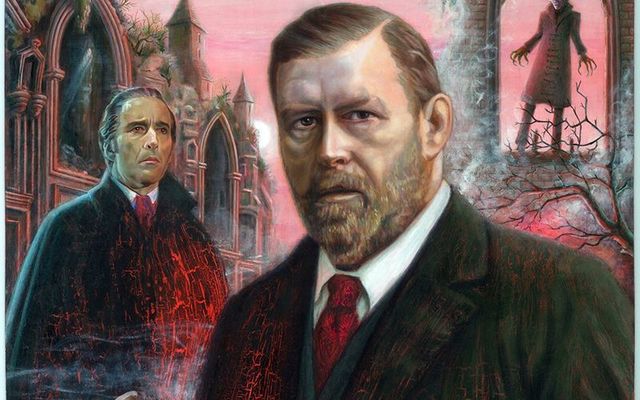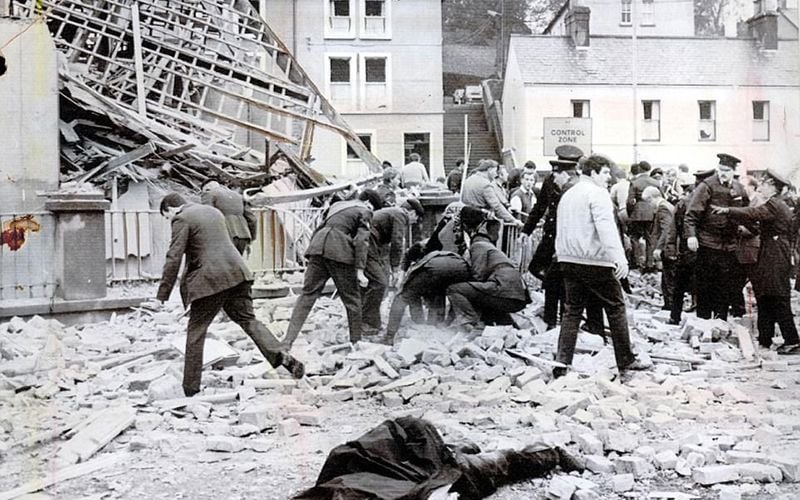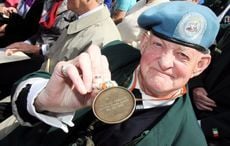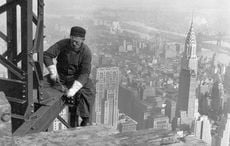Born in Dublin on November 8, 1847, Abraham Stoker, or ‘Bram’ as he’s popularly known, was an Irish writer who is remembered today for his magnum opus, the malevolent Dracula, which he completed in 1897.
He came into the world at 15 Marino Crescent, Clontarf, a northern coastal suburb of Dublin on 8 November 1847, 176 years ago this year. The Crescent, Dublin’s only Georgian crescent, has 26 houses, putting number 15 towards its center. Here Bram lived along with his seven siblings including brother Thornle, who became a renowned surgeon, and sister Matilda.
Another resident of the crescent was Florence Balcombe who was a decade younger than Bram but who he married in 1878. A celebrated beauty and aspiring actress once courted by Oscar Wilde, she was living at number 1 at the time of the marriage. Stoker meanwhile is commemorated in the naming of the adjacent green space, which is now Bram Stoker Park.
Early Life
One of seven children of senior civil servant Abraham Stoker and Charlotte Thornley, a charity worker and writing critic whom Bram would trust with his own material. Stoker was an infant invalid yet would go on to excel academically, attending Trinity College, Dublin between 1864 and 1870, graduating with a BA, and later being awarded an MA.
Stoker began work with the Irish Civil Service and was based at Dublin Castle, however, he was also ‘moonlighting’. Having become interested in the theater whilst a student, Stoker went on to become an unpaid theater critic with a favorable review of a Henry Irving performance in December 1876 leading to the two of them meeting at Dublin’s Shelbourne Hotel. It was a fruitful liaison as the two men would go into business together and become firm friends.
Stoker was also writing his first short story, Crystal Cup. The Stokers meanwhile had their one and only child, a boy, in 1879, who predictably was christened Irving Noel Thornley Stoker. Not only did Irving provide a name for Stoker’s boy, he would also open doors as Bram found himself introduced to the likes of Sir Arthur Conan Doyle, the artist James Whistler, and the author Hall Caine who became another close friend who would be honored by having Stoker’s most famous work dedicated to him.

Love Irish history? Share your favorite stories with other history buffs in the IrishCentral History Facebook group.
Stoker duly went into partnership with the famous actor-manager Irving to run the Lyceum Theatre, which Irving owned, from 1878. Sir Henry, the first be-knighted actor, would play a key role in the whole Dracula legend, being responsible firstly for its connection with Whitby in North Yorkshire, and arguably being the genesis for the story itself.
An inspiration for Dracula
It was Irving who suggested Stoker take a recuperative holiday on Yorkshire’s east coast, recommending Whitby the seaside town split by the Esk which almost uncannily had a ruined 7th-century Gothic abbey on its East Cliff, glowering down on the place, as well as St Mary’s Church, reached by 199 steps, whose churchyard would also feature prominently in the story. Here in Whitby then were the inspirational sights that fired Stoker’s imagination.
How did the Whitby jolly come about? Well, apparently Stoker and Irving had been on an exhausting tour of Scotland (Stoker was Irving’s PA-cum-tour manager as well as his man at the Lyceum for some 27 years and would often write an exhausting 50 letters a day for the thespian). In the wake of this, they agreed to take a month’s sabbatical. It was 1890 when the actor suggested his colleague should give Yorkshire a try. Just to add some authority to proceedings Irving confided that he knew the town well having once put on a circus in the place. The back plot becomes ever more surreal.
Stoker, having received such a glowing recommendation for Whitby, promptly booked rooms on its Royal Crescent. A plaque on the building recalls the guest house’s most famous visitor. The Scottish tour was just the tip of the iceberg incidentally as far as the pair’s traveling was concerned. Stoker was particularly taken with the United States where Irving had an enthusiastic following and received two invitations, along with his mate, to visit the White House. One half-continent Stoker never visited was Eastern Europe, ironically the very part of the world where his famous yarn was to be set.
Scotland played its part in the Dracula story more than once. Not only was recuperation needed after the tour up there but Stoker returned many times as he found Cruden Bay, Aberdeenshire, conducive to his writing. He would return again and again between 1893 and 1910 and actually began writing the first chapters of Dracula here in 1895. Slains Castle which overlooks the bay may well have provided more inspiration for Bram as far as his descriptions of the Count’s castle were concerned than the other castle that’s popularly linked to the story, Bran Castle in Romania, where tourism bolts together book and location although Stoker’s fictional castle sounds more Slains than Bran I have to say.
This article was originally published in Ireland of the Welcomes magazine. Subscribe now!
Some of the inspiration may have come even closer to home: It's been suggested a visit to the crypts of St Michan’s Church in Stoker’s home city of Dublin might also have got his grey matter whirring. Yes, all those Dracula scenes with vampire coffins in the crypt.
Stoker certainly conjured up something memorable as Dracula went on to become one of the most iconic anti-heroes of fiction becoming, believe it or not, the most filmed made-up character in the history of the big screen. It was, of course, whilst perambulating the nooks and crannies of a seaside town that he began to piece together the skeleton of a story.
It was in Whitby Library that Stoker got his character’s name, which literally translates as ‘son of the dragon’. Quite.
In Wallachian, it simply means ‘Devil’. In the novel, the dragon’s progeny will arrive by boat in Whitby when the Russian schooner, the ‘Demeter’, runs aground, legging it ashore in the guise of a spectral mutt as Dracula briefly presages The Hound of the Baskervilles with Dog-Dracula bounding up those 199 steps to the churchyard where he’ll hang out. Whitby railway station would be the arrival point for the alliterative Mina Murray, one of the story’s principal characters. That visitation to the library was by a 45-year-old with a lead: He asked for An Account of the Principalities of Wallachia and Moldavia by W. Wilkinson. Somehow he’d settled on his locale. He also went to Whitby’s museum where he consulted maps.
Sometimes fact and fiction coalesce and Stoker was actually recalling a real event that had occurred five years earlier when the ‘Dmitry’ did indeed run aground within sight of the abbey. Dracula is a suitably menacing name for such a beast as the Count and infinitely better than Stoker’s first thought which was to have been Count Wampyr with the book titled The Undead which sounds decidedly passé today given all the Zombie movies we’ve endured.
Dracula is loosely based we believe on Vlad III, aka. Vlad the Impaler (c.1428-1476), ruler of Wallachia and son of Vlad Dracul, and hails from Transylvania. Just for the record Vlad didn’t have a penchant for imbibing human blood as far as I know although he did have a blood-curdling method of dispatching anyone who offended him. They dubbed him ‘the Impaler’ for good reason: As methods of execution went it was very much to the point.
Bran Castle is the place to head over there. It’s marketed as Dracula’s Castle, although Stoker may not have been aware of the place which also only had oblique associations with Vlad (although two books he researched did have sketches of Bran Castle, then referred to as Castle of Toursbourg, so it’s possible Bram did know about this castle when writing Dracula). The connection between the real Vlad and fictional Dracula seems fairly tenuous then and perhaps just offered Bram a bit of historical and geographical context as is needed by any writer of historical fiction. What Stoker did say though was that his story had a basis in fact, namely with Dmitry and the stories surrounding it, a thought that is scarier than any fiction. The book was finally published in 1897.
Stoker also wrote Personal Reminiscences of Henry Irving (1906), his personal tribute to the man who’d had such an influence on his life. And what of Stoker the man? He was 6 foot 2, a Protestant, a Liberal, a supporter of the monarchy, but also an Irish Home Ruler. He died in April 1912, his passing overshadowed by the loss of the unsinkable Titanic which went down five days earlier. The first (unauthorized) film version of the Dracula story, Nosferatu, came out in 1922 with Max Schreck playing the Count, with the first authorized depiction, Dracula, appearing almost a decade later in 1931 with Bela Lugosi leading. There would be many more adaptations to follow.
A Bram Stoker Festival takes place in the author’s hometown of Dublin each year.
*Originally published in Ireland of the Welcomes. Updated in 2025.




Comments